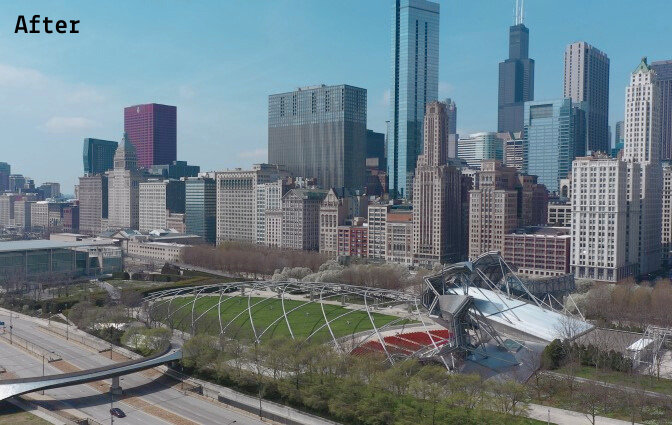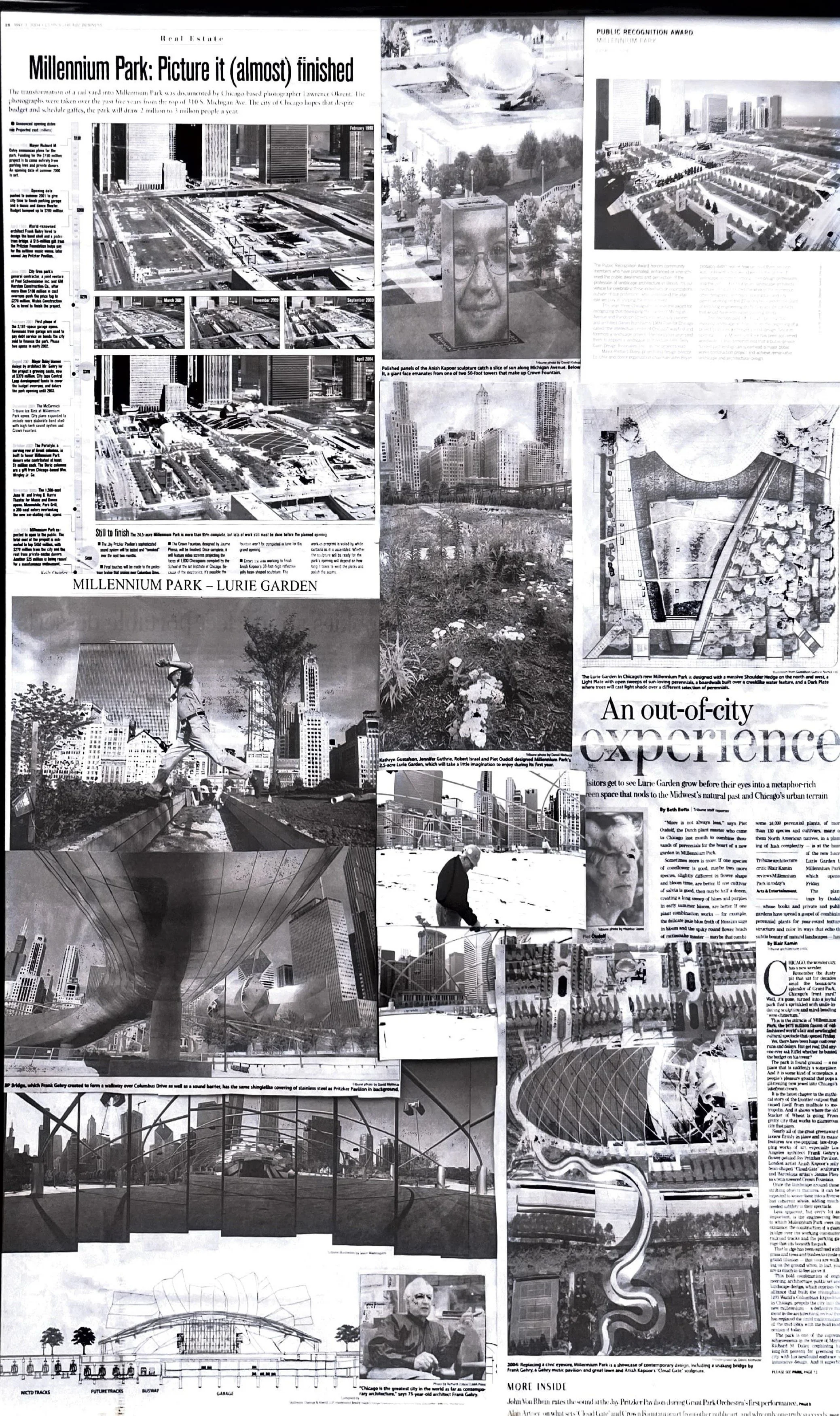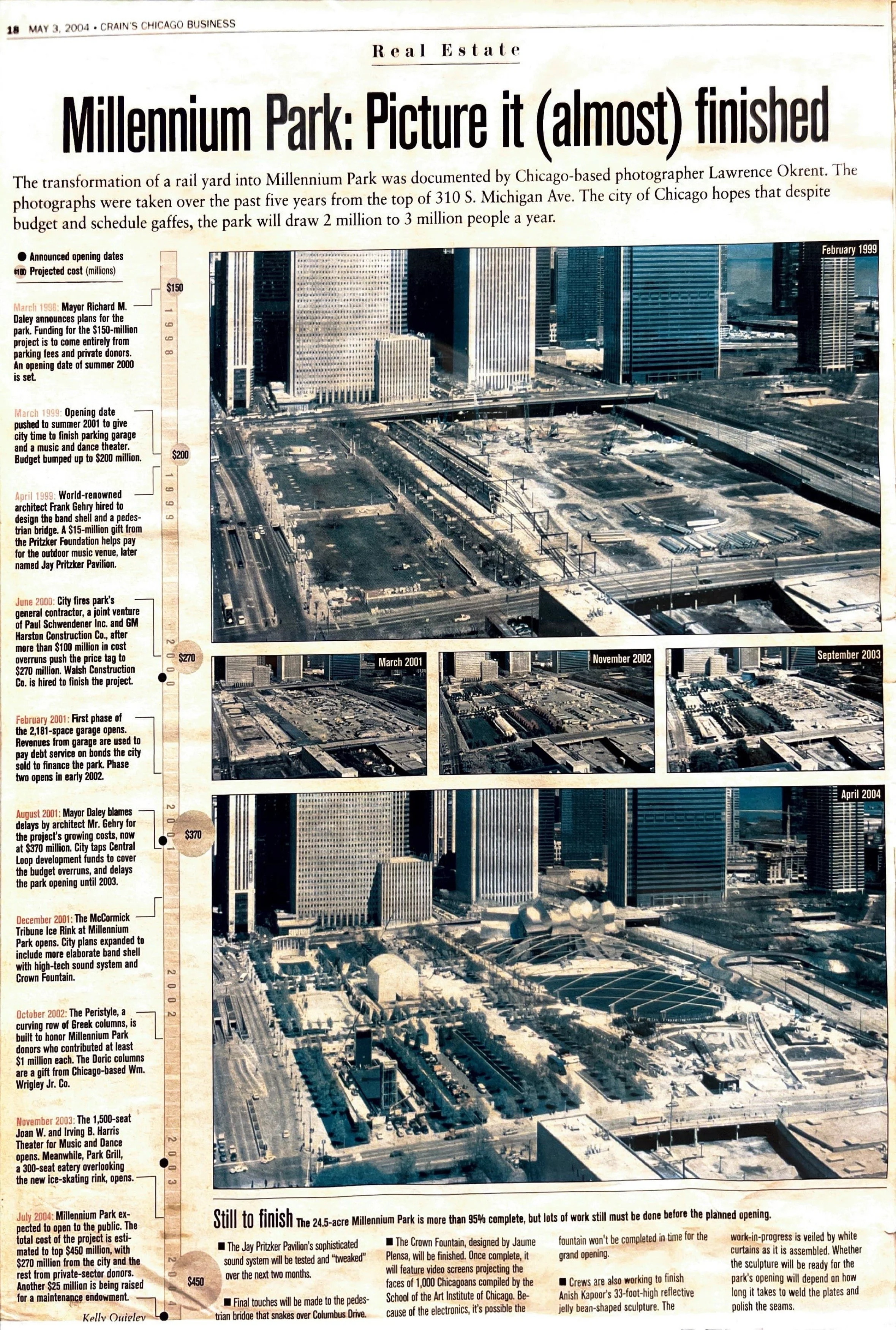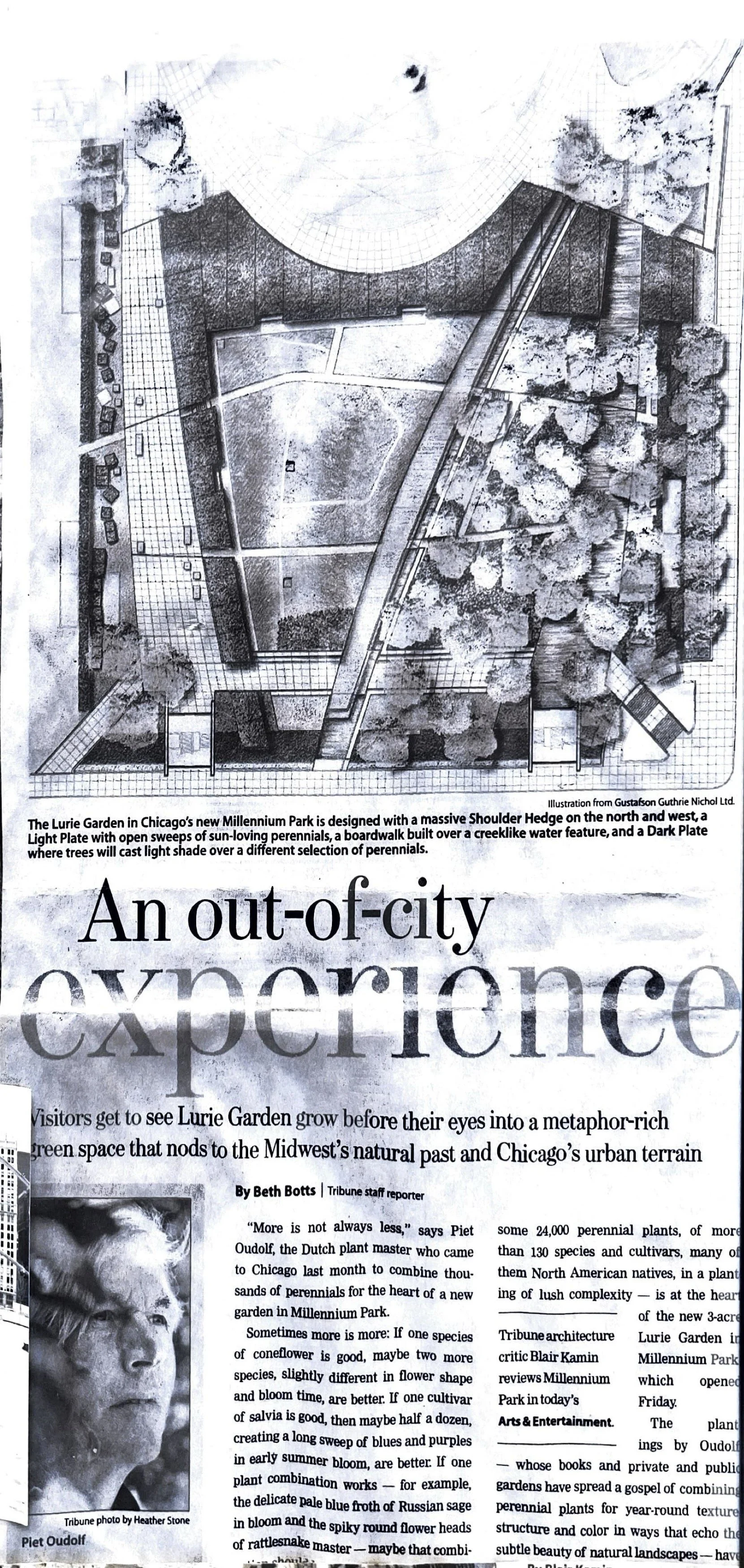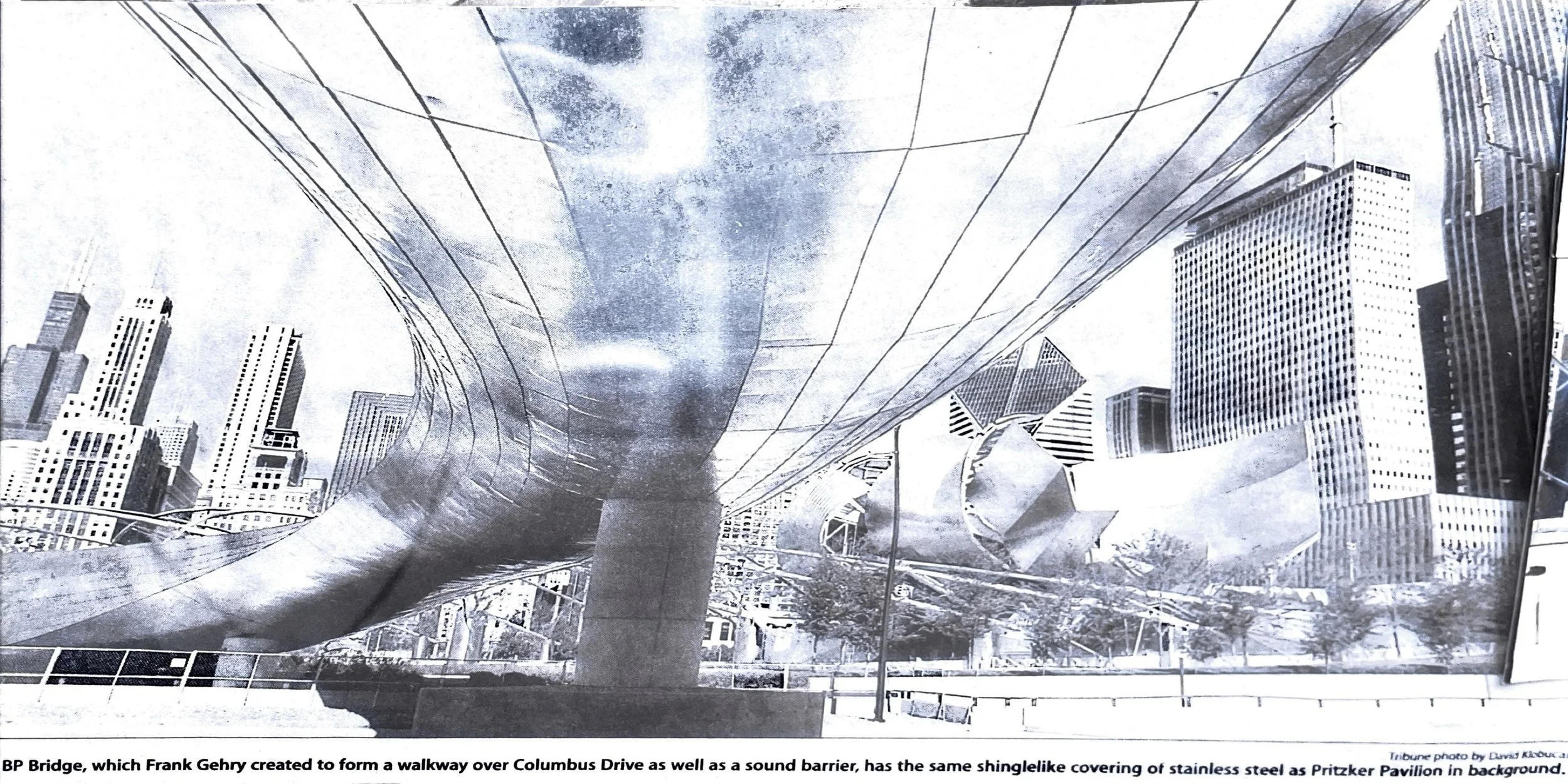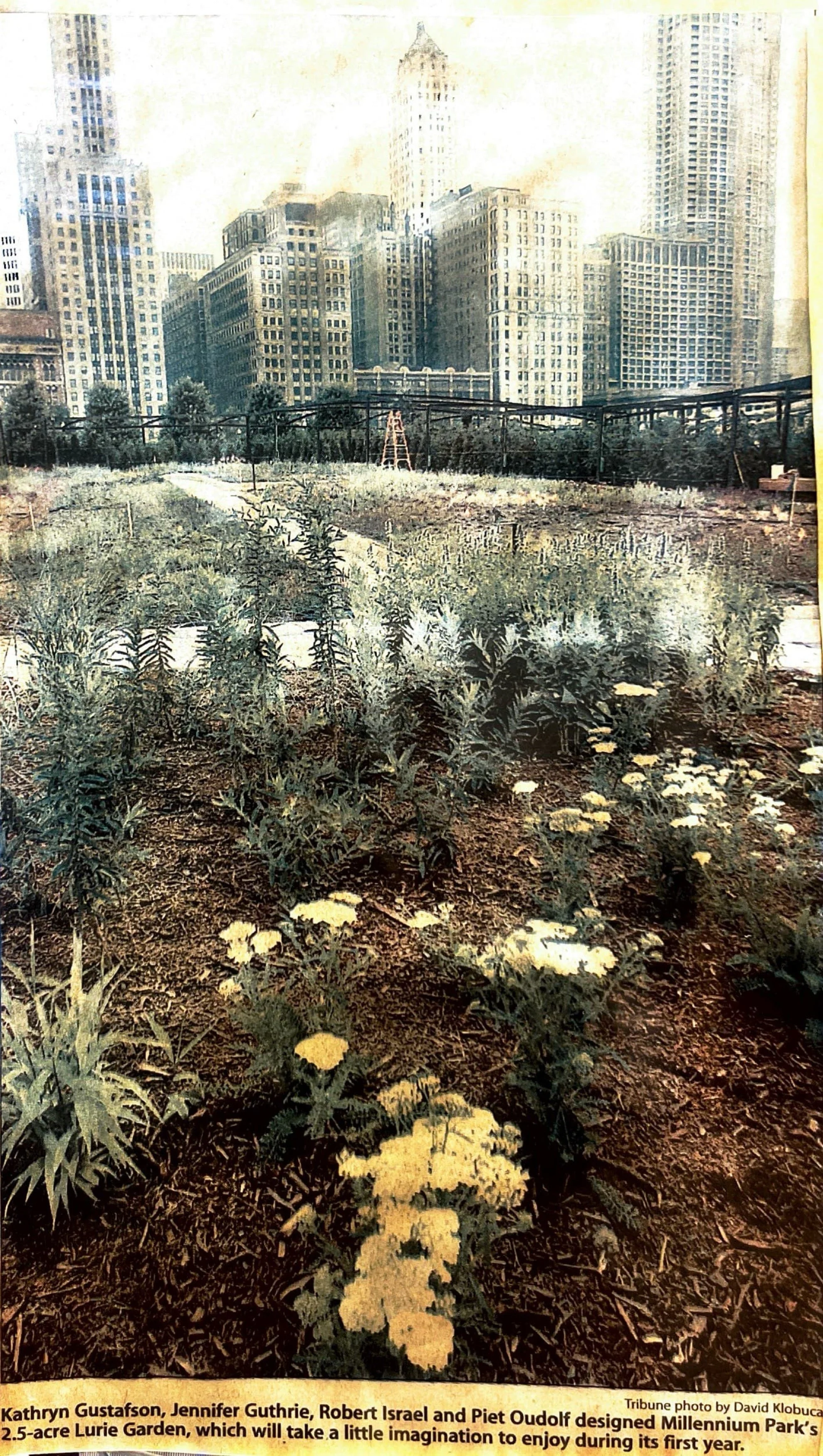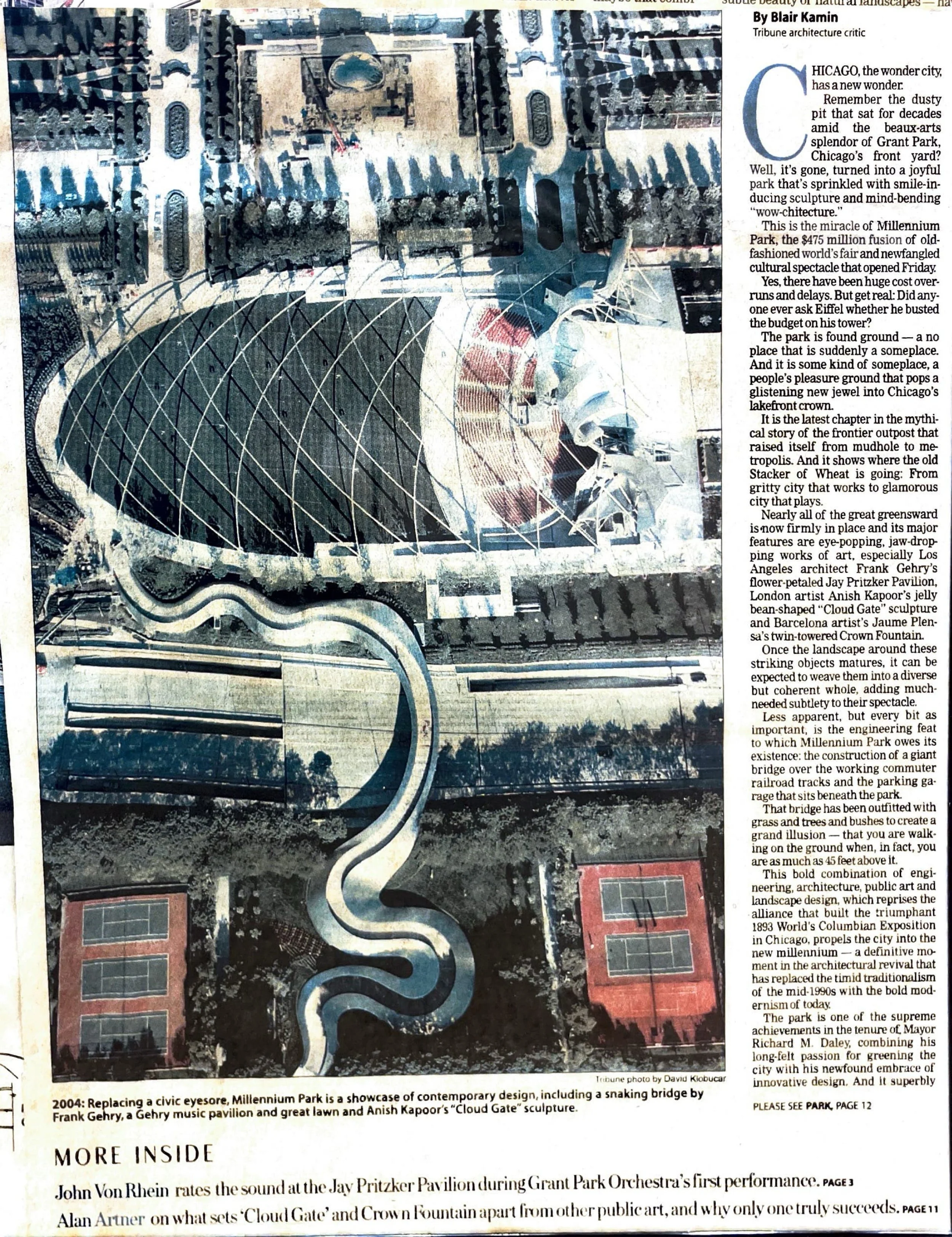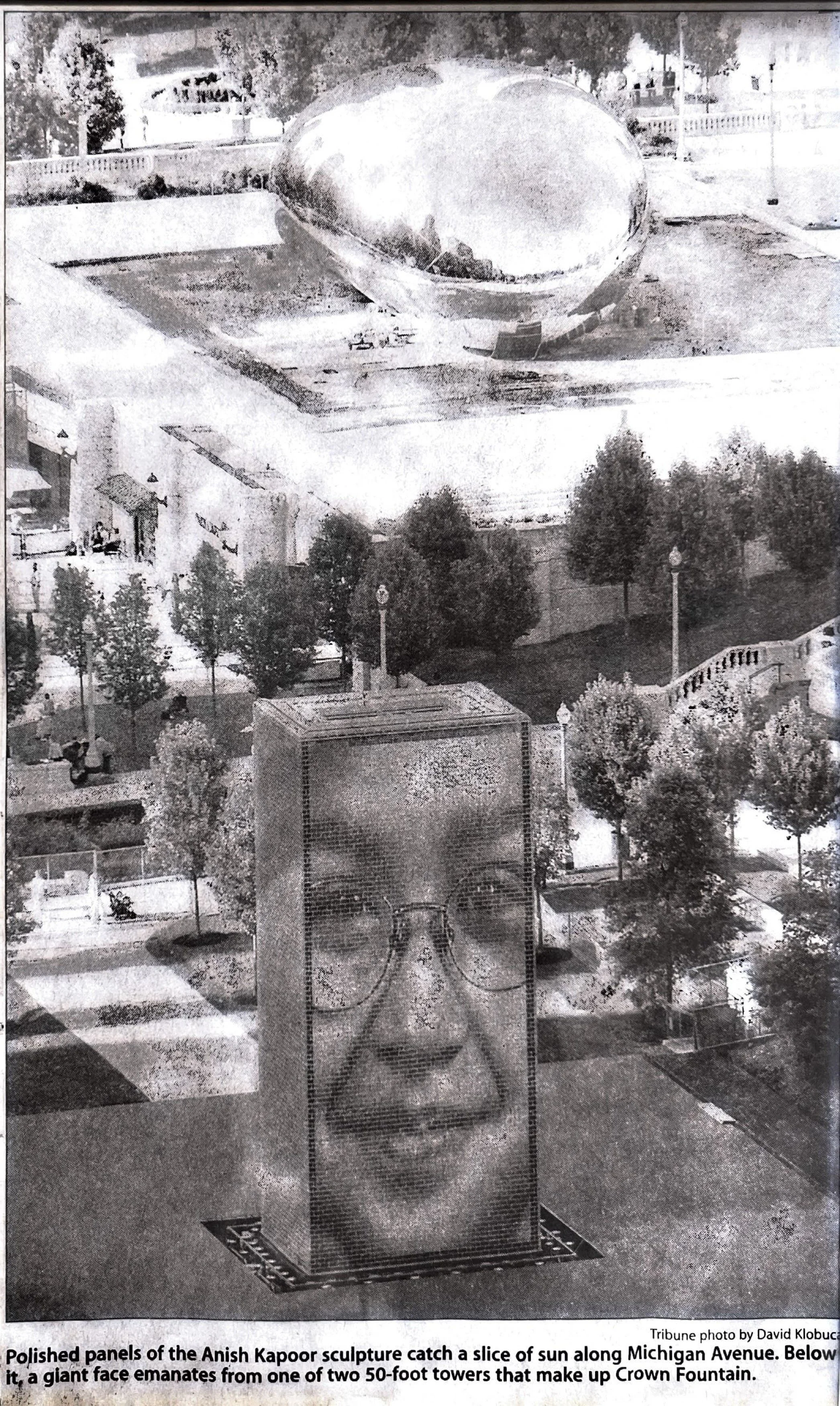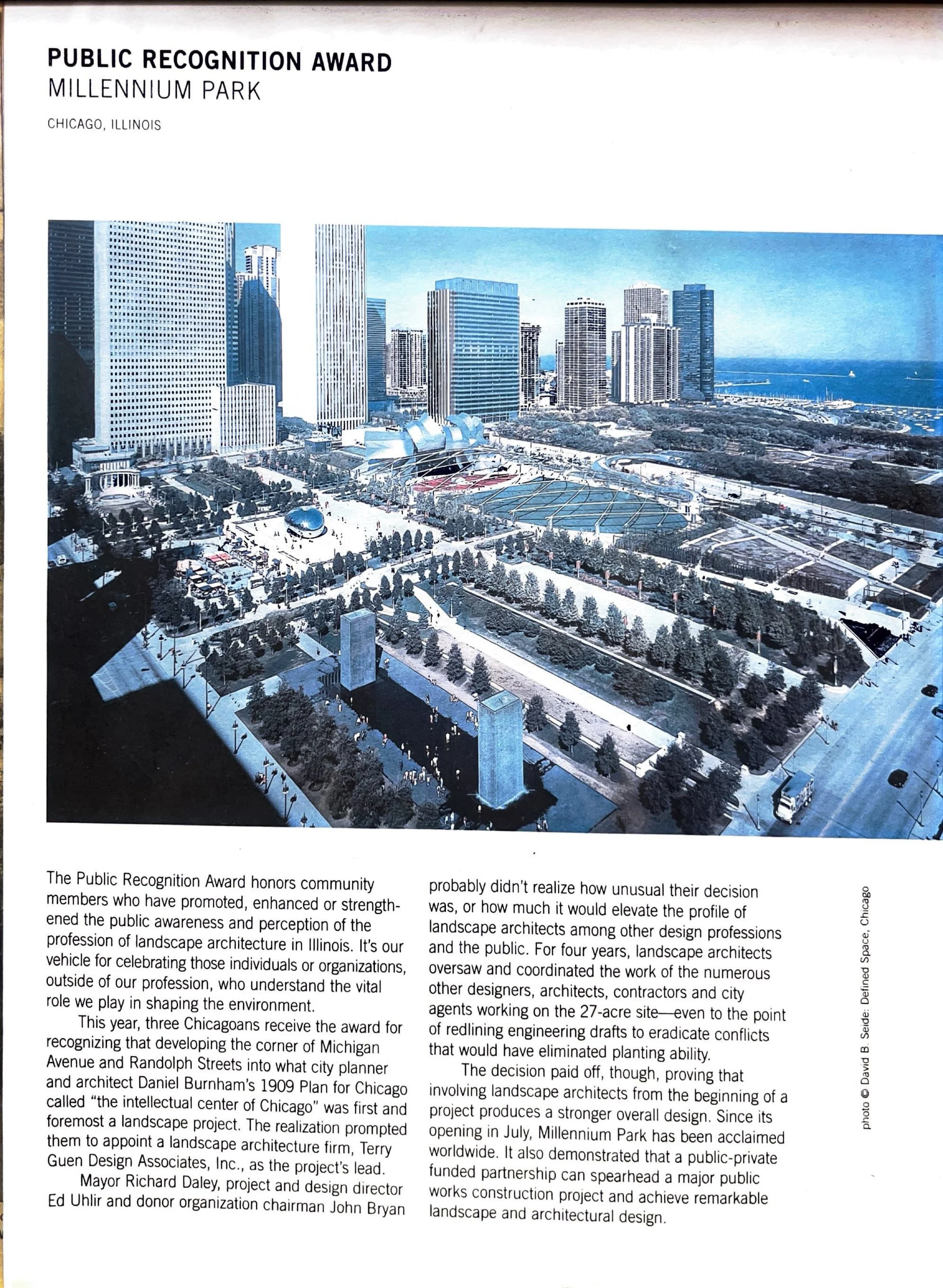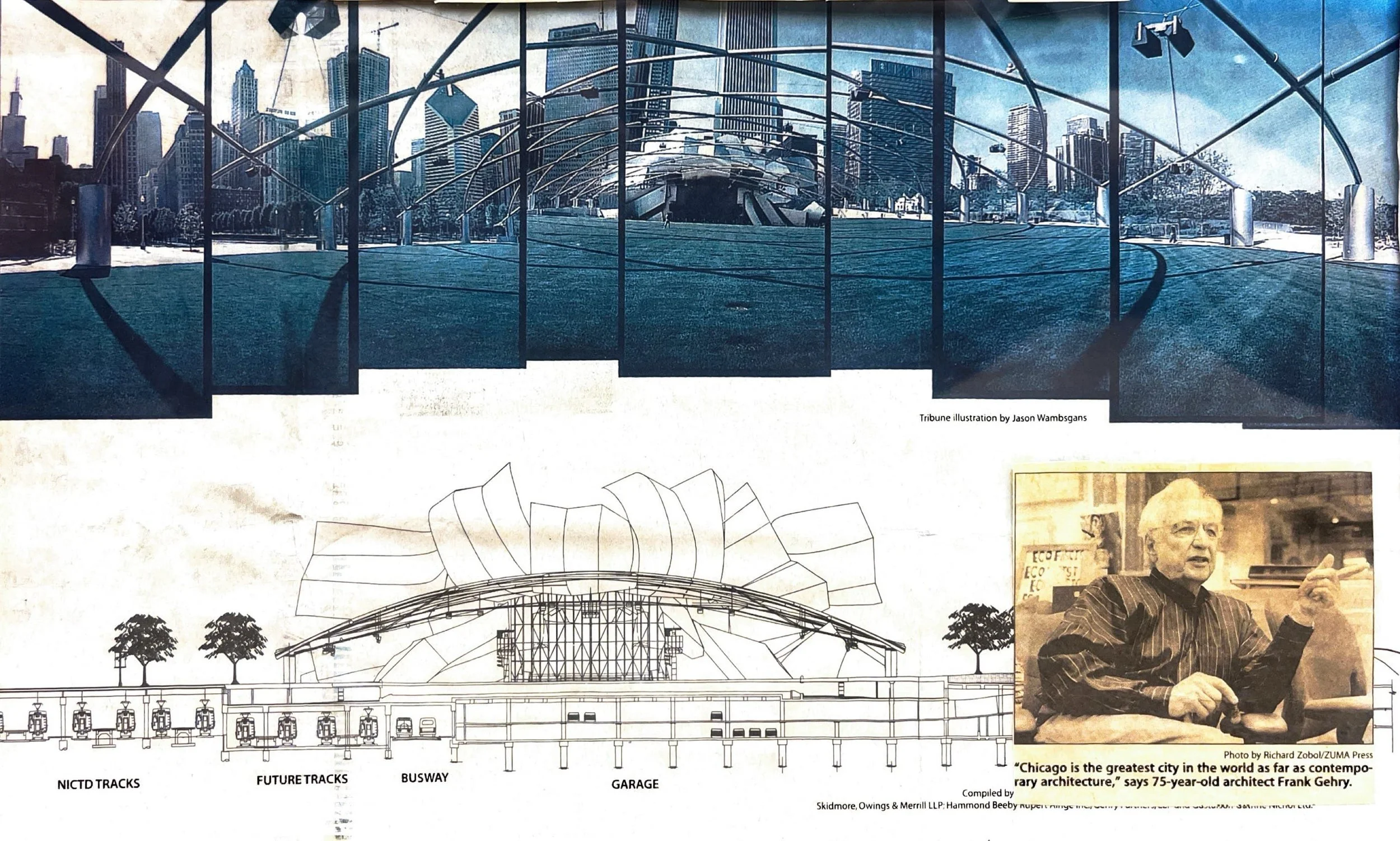Millennium Park and Lurie Garden
Article Posted: February 21st, 2025
Millennium Park
Before Millennium Park opened to the public in 2004, it was once an open parking lot and railroad yard that occupied prime real estate along Chicago’s lakefront. Welcoming nearly 25 million visitors every year, Millennium Park has become a popular destination for Chicagoans and tourists. While the park may be best known for Anish Kapoor’s infamous sculpture, “Cloud Gate” aka “The Bean”, there is so much more to the beloved destination.
Frank Gehry, a world-renowned architect, designed the park with a modern yet contemporary feel that created a meeting place for visitors and native wildlife. Connecting the park with a stainless-steel bridge that matches the look of the Pritzker Pavilion allowed more visitors to travel between Maggie Daley Park, Grant Park, and Crown Fountain. It also allows them to see the wide variety of plants the park has to show. Millennium Park is home to more than thirty thousand perennials and five-thousand woody plants that require proper attention when watering. Roughly sixty percent of plant species in the park are native to the Midwest, helping boost Chicago’s natural environment.
Working alongside JBC Landscape Architects, Halloran and Yauch was in charge of the installation process to ensure that the irrigation system was reliable to meet the high standards that were needed to water the park. The system efficiently irrigates the entire 24.5-acre park to ensure that the park stays green during those hot Chicago summers. With our hardworking servicemen and a team of expert supervisors, H&Y managed to install a high-quality system that has been utilized and enjoyed by millions of parkgoers.
Lurie Garden
Additionally, Lurie Garden opened at the same time causing excitement across the city for nature lovers. Located along E. Monroe Street & S. Columbus Drive, Ann & Robert H. Lurie’s generous donation was truly a beautiful gift to Chicago. Helping Chicago’s green initiative and watching the transformation from an urban parking lot to a green oasis was a magnificent sight to start off the millennium.
Piet Oudolf designed the garden to resemble a four-season meadow, that holds a biodiverse ecosystem year-round. Home to various insect populations, pollinators are responsible for the majority of the eye-catching blossoms that occur. Bees, butterflies, flies, beetles, and moths are to thank for the gorgeous flowers that bloom throughout the year. These pollinators have a symbiotic relationship with flowers, meaning that both insects and plants experience benefits from one another. Without these insects playing a critical role in the environment, the garden would vanish.
Therefore, it is imperative to have an effective and efficient way to water all the plants. The installed irrigation system conserves water and only waters plants when needed, guaranteeing a sustainable environment for years and years to come. Not only does proper irrigation save plants, but it also saves the bees. Given that the garden is constantly changing to help the plants thrive in the best possible manner; the garden acts as a safe haven for the two-bee hives that reside in the park.
In Conclusion, Halloran & Yauch is honored to have contributed to a project that has transformed a heavily industrial plot of land into a charming attraction for all of Chicago to enjoy. The park and garden are free to the public and open every day from 6am to 11pm. Make sure to check it out next time you’re downtown and want to take a stroll outside.
Fun Fact: Millennium Park / Laurie Garden is on top of a multi-level parking lot and active railroad, making it one of the largest green roofs in the world.
Learn about the history of Millennium Park in this 3 minute video.
Watch the beautiful shift from spring to summer at Lurie Garden.




